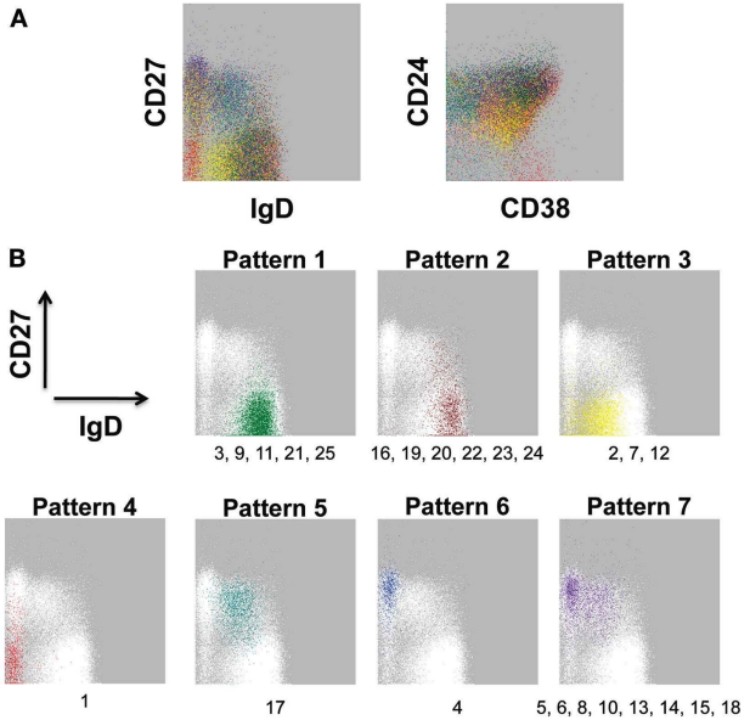B cell immunotherapy is a novel therapeutic approach with the aim to promote B cell activation, differentiation, and anti-tumor antibody production within tumors. After selective activation, amplification, antibody class snucleaseswitching, and somatic hypermutation, matured B cells own various subtypes across different cancers (shown in Fig.1). Thus, B cell subsets should be measured to ensure the whether they maintain or differ into the desired B cell phenotype.
We offer scientific and comprehensive services for B cell phenotype analysis, including flow cytometry assay (FC), immunohistochemistry assay (IHC), immunofluorescence assay (IF), and comprehensive data analysis to ensure high-quality B cell engineering results. To get more information about the quality assessment of engineered B cells functionally in vivo and in vitro, please inquire about our Engineered B Cells Assessment Service.
 Fig.1 Our phenotype analysis service. (Creative Biolabs)
Fig.1 Our phenotype analysis service. (Creative Biolabs)
Creative Biolabs is committed to efficiency, confidentiality, and rapid, accurate service with proven experience and expertise.
 Fig.2 Our features and benefits. (Creative Biolabs)
Fig.2 Our features and benefits. (Creative Biolabs)
Here are some results displayed that refer to the phenotype analysis results of engineered B cells in articles.
 Fig.3 FLOCK analysis of human PBMC stained with the 12-color memory B cell reagent panel. (Kaminski, et al., 2012)
Fig.3 FLOCK analysis of human PBMC stained with the 12-color memory B cell reagent panel. (Kaminski, et al., 2012)
Paper Title: Engineering protein-secreting plasma cells by homology-directed repair in primary human B cell
Technology: CRISPR/Cas9; Phenotype Analysis
Sample: Primary Naive Human B Cells
Journal: Molecular Therapy
Published: 2018
Background: Plasma cells engineered to produce de novo proteins have the potential usage in curative therapies for protein deficiency diseases. HDR-mediated genome editing in B cells may have several advantages over episomal DNA and viral vector transduction for therapeutic applications, including decreased risk of cassette mutation and ensured transgene expression.
Results: Creative multiplexing of gene disruption and HDR strategy of B cell engineering will likely provide ever more powerful tools to coordinately optimize protein secretion, cellular phenotype, and long-term survival.
Q: When do we need the phenotype analysis?
A: Optimize conditions for the expansion of subject B cells; verification of right locus insertion of engineering cassette; ensure desired B cell subtypes in vitro after cell differentiation; assessment of B cell differentiation and distribution in vivo.
Q: What's the difference between FC and IHC, two different phenotype assays?
A: FC could detect membrane-bound proteins on the cellular level with a panel of B cell subtypes. While IHC could detect the proteins on the level of tissues.
Creative Biolabs offers professional consultation guidance before, during, and after the project. The custom data analysis could be provided based on the needs of our customers. Please contact us for your tailored solution.